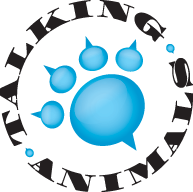Don Argott–co-director of “The Bond,” a four-part wildlife series streaming on DiscoveryPlus, examining the singular animal-human connection forged amongst four folks and critters (kangaroo, dolphin, goat, cheetah), from disparate backgrounds and regions of the world—recounts how he got started as a documentary filmmaker.  A musician who initially was an aspiring cinematographer, Argott went to school to learn video-making, production, and other skills, and, in the early 1990s, started down the path of making documentaries. He recalls experiencing a revelatory moment upon seeing “American Movie,” the 1999 documentary by Chris Smith about a filmmaker making a film—it earned good reviews and other acclaim (including the Grand Jury Prize for Documentary at the Sundance Film Festival), and “changed my view,” Argott says, of filmmaking. (Some years later, Smith
A musician who initially was an aspiring cinematographer, Argott went to school to learn video-making, production, and other skills, and, in the early 1990s, started down the path of making documentaries. He recalls experiencing a revelatory moment upon seeing “American Movie,” the 1999 documentary by Chris Smith about a filmmaker making a film—it earned good reviews and other acclaim (including the Grand Jury Prize for Documentary at the Sundance Film Festival), and “changed my view,” Argott says, of filmmaking. (Some years later, Smith contacted Argott, to sing the praises of his films.) As for how the opportunity arose to direct “The Bond,” Argott explains it was something of an offshoot of having helmed two episodes of “Cat People,” the Netflix series overseen by Glen Zipper, who, in filling a similar role on “The Bond,” invited Argott to direct that series’ four films. He describes the process of winnowing down and selecting the humans and animals who would be profiled in the four episodes, noting there was a checklist of traits that needed to be met to constitute a bonafide candidate, starting with the question of whether there was a substantial enough story to merit
contacted Argott, to sing the praises of his films.) As for how the opportunity arose to direct “The Bond,” Argott explains it was something of an offshoot of having helmed two episodes of “Cat People,” the Netflix series overseen by Glen Zipper, who, in filling a similar role on “The Bond,” invited Argott to direct that series’ four films. He describes the process of winnowing down and selecting the humans and animals who would be profiled in the four episodes, noting there was a checklist of traits that needed to be met to constitute a bonafide candidate, starting with the question of whether there was a substantial enough story to merit  the approximately 47 minutes required for the running time Discovery Plus had dictated for each episode. Argott addressed some of the biggest challenges he faced in shooting “The Bond,” beyond the obvious scourge of COVID, acknowledging that perhaps the most formidable filmmaking hurdles cropped up in telling the story of Jojo, the bottlenose dolphin and his extraordinary relationship with Jay Sargent: Jojo is not captive (Sargent makes clear that she’s vehemently
the approximately 47 minutes required for the running time Discovery Plus had dictated for each episode. Argott addressed some of the biggest challenges he faced in shooting “The Bond,” beyond the obvious scourge of COVID, acknowledging that perhaps the most formidable filmmaking hurdles cropped up in telling the story of Jojo, the bottlenose dolphin and his extraordinary relationship with Jay Sargent: Jojo is not captive (Sargent makes clear that she’s vehemently
 anti-captivity), but rather, lives in the ocean around Turks and Caicos. So capturing him on film, in order to capture them on film, became a crapshoot. We also spend more than a little time discussing another “Bond” story, that of Rae Harvey, who operates a kangaroo sanctuary in Australia, where most of the animals are rehabilitated then released, while retaining the freedom to come and go from the facility. One kangaroo, Kanku, has chosen to become a permanent resident, developing an exceptionally close, powerful relationship with Harvey. And, we agreed, how strongly that relationship resembles the closest connection us regular humans have with our cats or dogs. (https://www.discoveryplus.com/, https://www.facebook.com/discoveryplus/?brand_redir=105789864475600, https://www.instagram.com/discoveryplus/, https://www.914pictures.com/)
anti-captivity), but rather, lives in the ocean around Turks and Caicos. So capturing him on film, in order to capture them on film, became a crapshoot. We also spend more than a little time discussing another “Bond” story, that of Rae Harvey, who operates a kangaroo sanctuary in Australia, where most of the animals are rehabilitated then released, while retaining the freedom to come and go from the facility. One kangaroo, Kanku, has chosen to become a permanent resident, developing an exceptionally close, powerful relationship with Harvey. And, we agreed, how strongly that relationship resembles the closest connection us regular humans have with our cats or dogs. (https://www.discoveryplus.com/, https://www.facebook.com/discoveryplus/?brand_redir=105789864475600, https://www.instagram.com/discoveryplus/, https://www.914pictures.com/)

ALSO: I spoke briefly with Kirsten Peek, manager media relations at the Humane Society of the United States (HSUS), to discuss the HSUS operation rescuing 4000 beagles, removing them from a facility in Virginia. An investigation had revealed that, at this facility, beagles were being bred and sold to laboratories that conduct animal experimentation. Peek recalls the reaction she and her HSUS colleagues had to the scope and severity of the case, and decribes the initial phases of their operation—in the first two stages, which they had completed as of this interview, HSUS had extricated some 900 dogs. It’s obviously a major undertaking, requiring tremendous finances and other resources, and there is a dedicated web page for those who want to remain updated on the status of the beagle project, and may like to donate in support of that project. (https://www.humanesociety.org/4000beagles)
COMEDY CORNER: Nate Bargatze’s “How To Get Bitten By A Snake” (https://natebargatze.com)
MUSIC: Rebekah Pulley’s “Talking Animals Theme,” instrumentals
NAME THAT ANIMAL TUNE: We didn’t play “Name That Animal Tune” today.
AUDIO ARCHIVE:
Listen Online Now:



